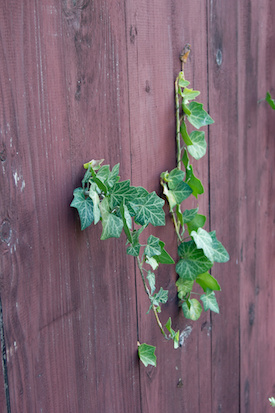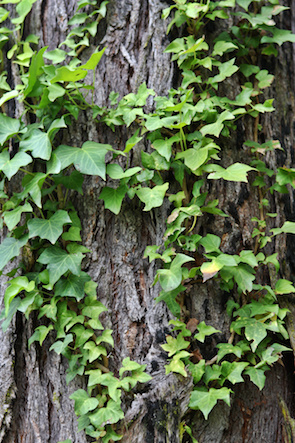The Love/ Hate Relationship Of Ivy & Kudzu In Marietta
Ivy is one of those classic elements people romanticize as it climbs up and around an old tree.
The tree will have a different story about it, as the ivy’s presence releases moisture into the bark, it increases the appeal of the tree for additional harmful pests: fungal growth and insect infestation.
While Iivy and Kudzu are considered decorative, it strangles trees.
In addition it is like a parasitic effect, also stealing nutrients and water from the very trees it wraps itself around.
It has been known to accelerate tree rot. It has been known to kill trees and may topple trees from the added weight during storms.
Another place to avoid planting ivy involves dead trees even. Do not plant ivy so it abuts against wood retaining or decorative walls against wood fences. Ivy works its way between the wood, cracking open joints to cause structural damage.
Ivy’s roots penetrate through cracks and weaknesses within wood grains to increase the risk of experiencing rot. Again, ivy is known to carry and harbor insects and other pests that destroy wood.
Ivy Removal From Bricks And Mortar
As you get to know The Strangler or Backstabbing Beauty better, you learn that Ivy and Kudzu are actually harmful to much more than quietly suffering trees.
Do not ever plant ivy on brick that has crumbling mortar, is cracking, or contains loose brick, because these are all signs of weakened brick. The ivy’s roots invade the loose areas, making cracks bigger, which allows more moisture in, which causes more damage.
And, do not even think about re-planting the ivy anywhere else around the exterior of your home, where it will climb walls, wreck siding, stucco, brick, windows, doors, and even gutters.
It is more like an infestation by a weed than the innocuous beauty that most consider it.
The same advice holds for old brick homes. While newer homes automatically have higher-quality mortar that holds up better, older homes from pre-1930 have weaker mortar. Add ivy and water and it can cause severe damage to your home. Mortar before 1930 was lime-based and is softer newer cement-based mortar.
Dry stacked stone walls have no mortar and plenty of crevices and nooks and crannies for ivy to take hold, sometimes enough to topple a wall.
Professional Ivy And Kudzu Removal From House Siding
It invades the crevices and that is where the ivy does the most damage. Wood siding and cedar shake siding take the brunt of the abuse from ivy and damage the underlying wall that leads to the interior of your home.
The same holds true for stucco though it is more when you pull the ivy off that it truly becomes an issue. It may take chunks of stucco with it. Meanwhile, the old roots may permanently discolor the stucco. Along the same lines, painted surfaces react equally as bad as stucco when ivy is pulled off of it.
Poison ivy is another common menace to yards. The ivy gives off an oily resin that is toxic, may cause a severe rash. This same oily resin gives off a toxic gas if burned that may cause lung problems.
Instead of trying to rid your yard of this yourself. Hire ivy removal specialists to remove the problem. Same for the English ivy and Kudzu, you might be best off having professionals take care of the issue for you. Basically, the idea is to eradicate the Ivy and Kudzu by eliminating it. It involves thoroughly digging it up and taking it off site to avoid creating further problems for other flora and fauna as well as the house and the humans inhabiting it.
Contact us today to clear ivy worries from your life and property all at one time. Stop living in fear of what these ivy beauties will do next to your home and family. Get on with your life today.

